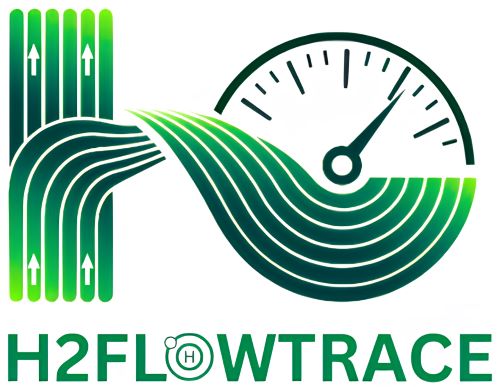H2 Flow Trace
Flow measurement traceability for hydrogen in gas networks. Developing large-scale verified metrological infrastructure to perform traceable pure hydrogen and HENG flow calibrations for gas networks.

The project (23IND05 H2FlowTrace) has received funding from the European Partnership on Metrology, co-financed from the European Union’s Horizon Europe Research and Innovation Programme and by the Participating States.
About the project
The European Union (EU) is committed to making Europe the first climate-neutral continent by 2050. Achieving this highly ambitious goal requires the complete transformation of the energy system, which accounts for more than 75 % of the EU’s greenhouse gas emissions. Hydrogen is key to enabling this transition, with the potential to provide energy at point of use with low or even net-zero greenhouse gas emissions. By providing a means for both short- and long-term energy storage, hydrogen is also key to supporting intermittent forms of renewable energy, including solar and wind.
Even in the medium-term, hydrogen will help meet the EU’s 2030 climate and energy targets with the installation of at least 40 GW of electrolysers which will produce 10 million tonnes of green hydrogen annually, and another 10 million tonnes will be imported. To achieve these targets the development of a hydrogen infrastructure needs to be rapidly accelerated.
Although large-scale decarbonised hydrogen projects are expanding across Europe, there is no large-scale verified metrological infrastructure to perform traceable pure hydrogen flow calibrations for gas networks. This project will address this by contributing to the development of the required metrological infrastructure, which has the potential to reinforce Europe’s leading position in the hydrogen economy.
The Objectives
The H2FlowTrace project has 7 strategic objectives:
To establish a robust metrological infrastructure for flow rates up to1300 m3/h at 0.1 MPa or 45 m3/h at 3.3 MPa(g) with a primary focus on pure hydrogen, but also enabling traceability for hydrogen/natural gas blends in small industrial meters, with a measurement uncertainty of 0.20 % or less
To establish a robust metrological infrastructure for flow rates of 200 m3/h to 10 000 m3/h, and pressures of 0.3 MPa(g) to 6.2 MPa(g) for pure hydrogen and hydrogen/natural gas blends in large industrial meters, with a measurement uncertainty of 0.30 % or less.
To design and test traceability transfer skids for pure hydrogen and hydrogen/natural gas blends. In addition, to carry out intercomparisons to determine the equivalence of independent traceability chains based on primary standards, secondary standards using a bootstrapping/upscaling approach, and secondary standards calibrated with alternative fluids to hydrogen.
To perform (i) primary calibrations of domestic gas meters (ultrasonic, diaphragm, thermal mass flow) with air and/or methane and with pure hydrogen up to 30 m3/h at atmospheric pressure and (ii) primary and secondary calibrations of industrial gas meters (ultrasonic, rotary, turbine) with air and/or natural gas and hydrogen/natural gas blends at flow rates of up to 1000 m3/h and pressures of up to 6.2 MPa(g). Based on these results as well as existing data, to deliver statistically meaningful datasets for air, natural gas, or other alternative fluid calibration for the transferability to hydrogen gas flow conditions for domestic and industrial flow meters.
To demonstrate the establishment of an integrated European metrology infrastructure and to facilitate the take up of the technology and measurement infrastructure developed in the project by the measurement supply chain (accredited calibration and testing laboratories, European Metrology Network for Energy Gases), standards developing organisations (ISOTC30, OIML TC 8/SC 7, CEN/TC 237) and end users (energy gas transmission, distribution operators, FARECOGAZ, ENTSOG, Hydrogen Europe).

